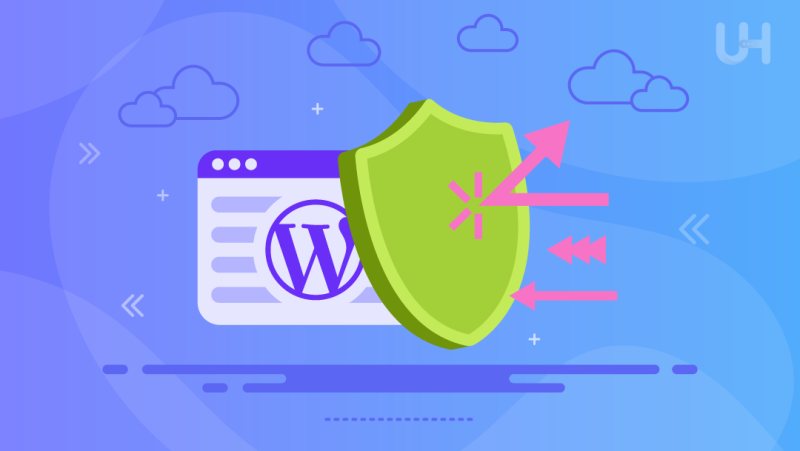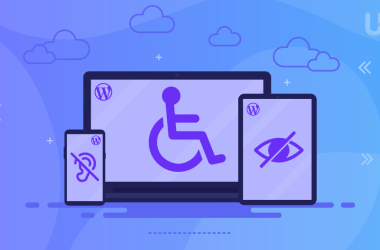Brute force attacks remain one of the most common cybersecurity threats faced by WordPress site owners. These attacks rely on repeatedly guessing username and password combinations until access is granted and if you’re not prepared, your site could be compromised before you even realize it.
Fortunately, there are effective ways to prevent brute force attacks in WordPress that don’t require you to be a security expert. From simple login tweaks to server-level defenses, protecting your site can be easier than you think.
Key Takeaways
- Brute force attacks remain a major threat – Hackers use automated tools to guess login credentials, making it essential to implement proactive security strategies on every WordPress website.
- Strong login policies make a difference – Enforcing strong passwords, limiting login attempts, and enabling two-factor authentication (2FA) significantly reduce the risk of unauthorized access.
- Firewall and security plugins are crucial – WordPress security plugins with firewalls block suspicious traffic before it reaches your site, adding an essential layer of protection.
- Regular updates close vulnerabilities – Keeping WordPress core, themes, and plugins updated ensures you’re not leaving open doors that attackers can exploit.
- Hosting plays a vital role – Choosing a secure hosting provider like UltaHost helps prevent brute force attacks in WordPress by offering server-level firewalls and advanced monitoring.
- A layered security approach is best – Combining multiple strategies—such as IP blocking, CAPTCHA, backups, and monitoring provides maximum defense against brute force attacks.
In this guide, we’ll walk through the most reliable strategies you can implement today to prevent WordPress brute force attacks and keep your website safe, fast, and online.
1. Strong Login Credentials

One of the easiest ways to block brute force attempts is to make your username and password combinations harder to guess. Avoid using “admin” as a username and never reuse passwords from other sites.
Key Tips
- Change passwords regularly, especially after any security update.
- Use a password manager to generate complex, unique passwords.
- Combine letters, numbers, and symbols.
2. Limit Login Attempts
By default, WordPress allows unlimited login attempts a gift to brute force bots. Limiting failed login attempts is one of the simplest ways to block repeat attackers from gaining access.
Key Tools
- Use plugins like “Limit Login Attempts Reloaded” or “WP Limit Login Attempts”.
- Set lockouts after 3–5 failed tries.
- Block IPs that repeatedly try invalid logins.
Ensure WordPress Success with Reliable Hosting
Enhance the defense of your WordPress site with Ultahost’s powerful hosting solutions. Experience security for your WordPress websites through seamless plugin integrations. Ultahost – protecting your websites for online success.
3. Enable Two-Factor Authentication (2FA)

Even if someone guesses your password, two-factor authentication can stop them in their tracks. With 2FA, users must verify their identity with a one-time code sent to their phone or email making brute force entry nearly impossible.
Key Tools
- Google Authenticator plugin.
- WP 2FA.
- Wordfence with 2FA enabled.
Two-factor authentication is especially important for admin-level accounts and anyone with access to sensitive site settings. Need help to enable 2FA, have a look “How to Enable Two-Factor Authentication in WP Admin”.
4. Hide the Login URL
Bots target the default login URL (yoursite.com/wp-login.php) because it’s predictable. Renaming or hiding this login page can stop many brute force scripts from even reaching the door. This simple change can significantly reduce bot traffic to your admin page.
Key Tools
- WPS Hide Login.
- iThemes Security.
- Custom Login URL (with password protection).
5. Install a Firewall and Security Plugin

Firewalls help block bad traffic before it ever reaches your site. Most top-tier security plugins include firewall protection, malware scanning, and brute force detection.
Key Tools
- Wordfence.
- Sucuri Security.
- All-In-One WP Security & Firewall.
These tools not only prevent WordPress brute force attacks, but also notify you in real-time if suspicious activity is detected. Here is a must read about Which WordPress Security Plugin is Better? Sucuri vs Wordfence.
6. Keep WordPress Updated
Outdated software is an open door to attackers. Brute force bots often exploit known vulnerabilities especially in older plugins or themes. Staying updated is a silent but powerful way to harden your site against intrusion. To tightening up security, these WordPress tips and tricks 2025 are designed to help you get the most out of your site without requiring deep technical know-how.
Key Tips
- Enable auto-updates for WordPress core and plugins.
- Delete any unused themes or plugins.
- Monitor security bulletins for updates from developers.
7. Use CAPTCHA or reCAPTCHA on Login Pages
Adding a CAPTCHA to your login screen stops bots from rapidly submitting login requests. It also creates a simple barrier that most brute force tools can’t bypass.
Key Plugins
- Login No Captcha reCAPTCHA.
- WPForms (includes CAPTCHA in login/registration forms).
This step works well with 2FA for a strong layered defense. Google reCAPTCHA is a widely used CAPTCHA service that helps distinguish between genuine users and bots attempting automated attacks. Generate reCAPTCHA keys and integrate them into your website improving your level of security.
8. Monitor Login Activity and Admin Behavior

Monitoring tools help you spot brute force attempts early before they do real damage. You can track failed login attempts, unusual IP addresses, and unauthorized user role changes.
Key Tools
- WP Activity Log.
- Simple History.
- Jetpack (for security logging).
Set up alerts to notify you when strange activity occurs, so you’re always one step ahead.
Conclusion
Brute force attacks might be automated, but your defense shouldn’t be. By following the strategies above, you’re not just reacting to a threat you’re proactively protecting your online presence.
From securing your login page and enabling 2FA to monitoring activity and using a reliable host, these tactics form a layered shield around your website. Each layer makes it harder for attackers to succeed and easier for you to stay in control. So don’t wait until your site is under attack take action now to prevent WordPress brute force attacks and safeguard everything you’ve built.
Even if your WordPress site is configured well, poor hosting can leave you exposed. A Ultahost’s Secure VPS Hosting offers built-in firewall rules, DDoS protection, malware scans, and regular server patches. When hosting handles server security, you can focus more on your business and less on backend threats.
FAQ
What is a brute force attack in WordPress?
It’s when bots repeatedly try different username/password combinations to access your WordPress admin panel.
Can strong passwords stop brute force attacks?
Yes, strong, complex passwords are one of the first defenses against these attacks.
How do I limit login attempts in WordPress?
You can use plugins like “Limit Login Attempts Reloaded” to lock users out after failed logins.
Is two-factor authentication necessary?
Absolutely, it adds an extra step for login verification, making brute force entry much harder.
How does hiding the login URL help?
It prevents bots from easily finding your login page, reducing automated attack attempts.
Which plugin is best for brute force protection?
Wordfence and iThemes Security are among the most reliable with built-in firewalls and login protection.
Does hosting impact brute force protection?
Yes, secure hosting providers block suspicious activity at the server level before it even reaches your site.








